
January 21, 2016
When Sean and Kathryn met just a few years ago, they had one important thing in common: They love to explore abandoned buildings. Being from North and South Jersey, respectively, they had plenty of opportunities to check out left-behind structures as kids, from old empty prisons to decaying hospitals, long-since closed. So when they came across each others' work online -- photos documenting their many adventures -- it was only natural they'd later meet in person, quickly become friends and begin seeking out new adventures, together.
Soon the couple turned their online postings into Abandoned NJ, an online space dedicated to documenting and preserving the memories of local abandoned structures. Friends they met along the way soon joined up and began contributing their own work and a full-blown community was born. As a group -- Kathryn and Sean, as its leaders, decline to give their last names or the names of their companions, as much of their exploration is dangerous and/or illegal -- Abandoned NJ has amassed thousands of fans across Facebook, Twitter, YouTube and Instagram.
And while the photos they take often feature peeling paint on cracked walls, creepily half-lit corridors and ghostly facades of centuries past, their passion project isn't just "ruin porn." This term for the photography trend depicting decaying built environments as beautiful and mesmerizing describes work that luxuriates over destruction. It appreciates a kind of beauty that comes from deterioration.
Abandoned NJ doesn't think deterioration, decay and destruction are something to fawn over. They think it's an abomination.
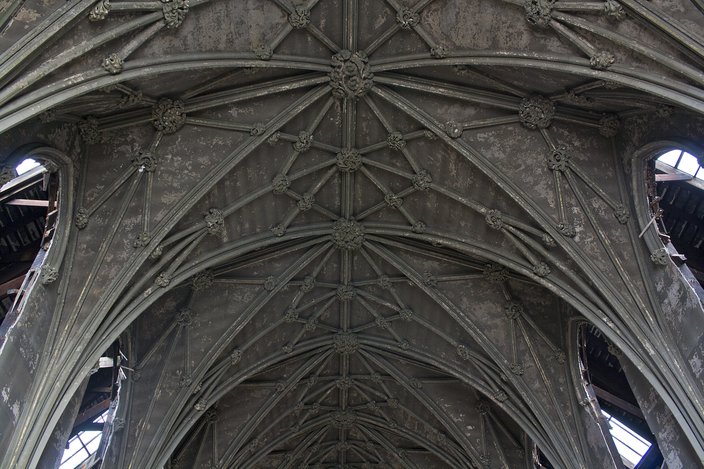 Abandoned NJ/AbandonedNJ.com
Abandoned NJ/AbandonedNJ.comAn interior shot of the Church of the Assumption in Philadelphia.
As Kathryn, Sean and their compatriots have continued exploring spaces in New Jersey, New York and Pennsylvania over the past few years, they've often been troubled by structures that, once attractive and useful, are left unused, often for decades, until they're so ugly or unsafe that the community allows a developer to turn over the land for profit. These buildings are often seen as four walls and a leaky roof -- or worse, as an unfortunate reminder of the past -- rather than a home to countless memories and histories that should be preserved.
So was the case for the Greystone Park Psychiatric Hospital in Parsippany, New Jersey. The gorgeous structure, opened in 1876, was designed in the Kirkbride model, then a popular way of constructing mental health facilities to maximize natural light and create a healing sense of community. At its construction, its continuous foundation was the largest ever made in the United States. Woody Guthrie moved there in 1956 after Huntingdon's disease disabled him; the facility was operational until 2008.
Despite many, highly publicized protestations and campaigns to the contrary, Governor Chris Christie and the state of New Jersey deemed the building unworthy of rescue. Condemned to destruction, Greystone was leveled by October 2015.
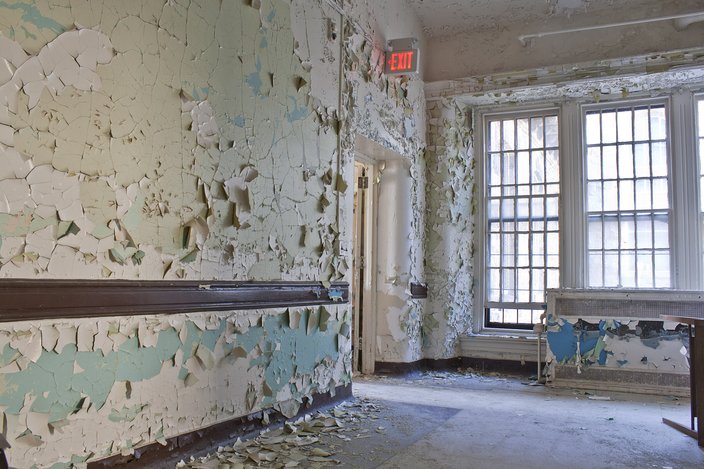 Abandoned NJ/AbandonedNJ.com
Abandoned NJ/AbandonedNJ.comAn interior shot of Greystone Park Psychiatric Hospital, demolished in 2015.
These days, Sean takes part in an offshoot of PreservationWorks specifically supporting Hudson River State Hospital in Duchess County, New York. Like Greystone, it's a Kirkbride building; like Greystone, it has seen better days; and, like Greystone, HRSH is part of the nation's long, uncomfortable history of treating mental illness.
The prevalence of important abandoned buildings which used to be hospitals, sanitariums or prisons suggests that our nation's unwillingness to confront the deinstitutionalization of the 1960s and 1970s and its long-term consequences is one motivation for demolishing them.
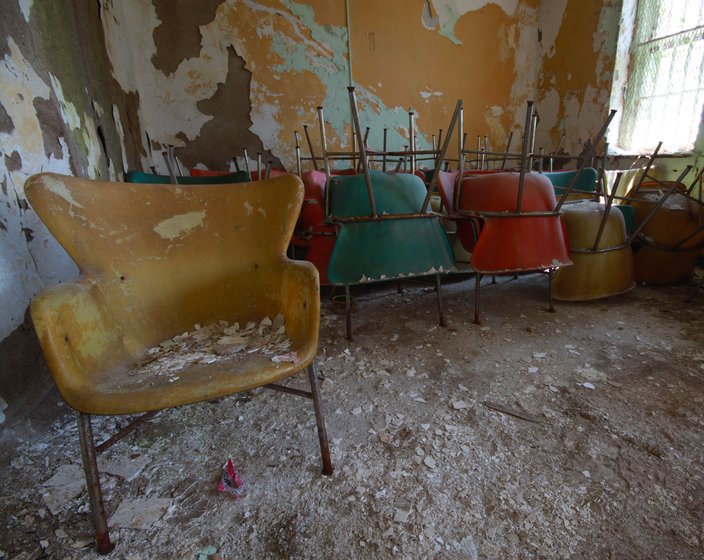 Abandoned NJ/AbandonedNJ.com
Abandoned NJ/AbandonedNJ.comAn interior shot of Greystone Park Psychiatric Hospital, demolished in 2015.
However, unlike Greystone, preservationists' efforts at HRSH are making a real difference. PreservationWorks: Hudson is working with the developers refurbishing the HRSH site to preserve its historical and architectural significance for later generations.
"So, even though we lost one, we’re getting the ball rolling on saving several others," Sean said.
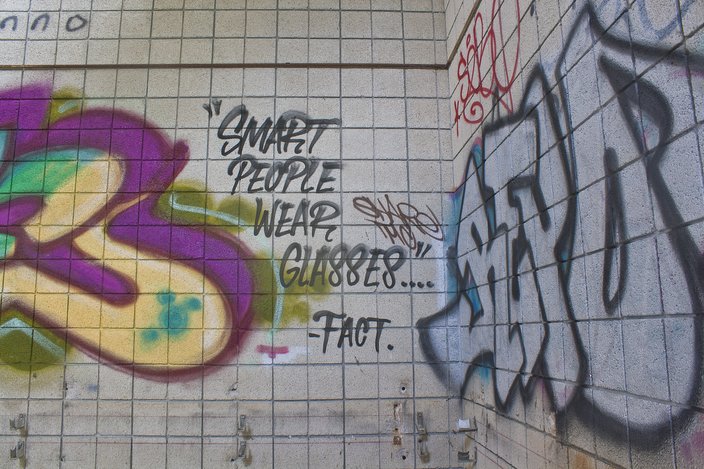 Abandoned NJ/AbandonedNJ.com
Abandoned NJ/AbandonedNJ.comAn interior shot of Hudson River State Hospital in New York.
"It teaches kids to build things up and throw them away..." Kathryn said. "It's a waste of the environment...to build something up and tear it down just so you can put up something new in another couple decades when people decide it’s ugly again."
The Abandoned NJ crew may have begun their individual journeys just looking for the next creepy place to check out, but as it's evolved it has become somewhat of an awareness platform. Though the group is still all about posting cool images of newly discovered structures, rarely do they come unaccompanied by a reminder that these buildings have been laid to waste by man, unattended and forgotten, often for no reason at all.
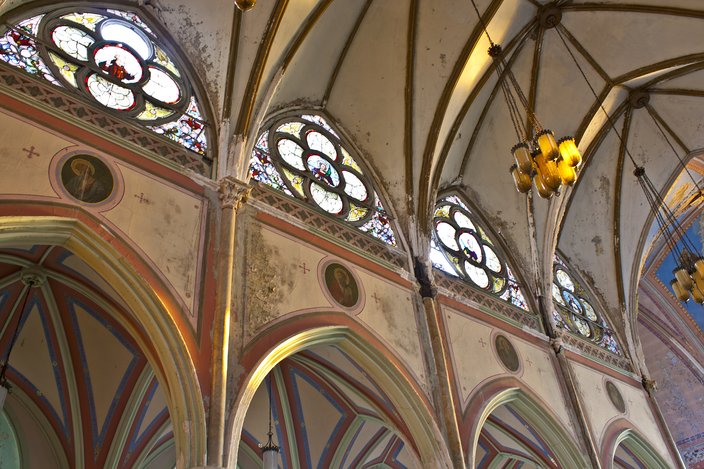 Abandoned NJ/AbandonedNJ.com
Abandoned NJ/AbandonedNJ.comAn interior shot of St. Bonaventure Roman Catholic in Philadelphia, which was demolished in 2013.
Instead, eager explorers and wannabe preservationists can look into other campaigns or organizations that need their help. (Preservation New Jersey and Preservation Alliance for Greater Philadelphia are just two such organizations.) Every effort may not be successful, but it's advocates and supporters like Abandoned NJ that raise enough awareness for communities to reinvest in their abandoned structures. Without people like Kathryn, Sean, PreservationWorks and yes, even those who care enough to contribute an Instagram like or a Facebook share, public projects like the now-beloved Eastern State Penitentiary would never have happened.
"When we turn these buildings back over to the people that care," Kathryn said, "they go on to be reborn into new life."